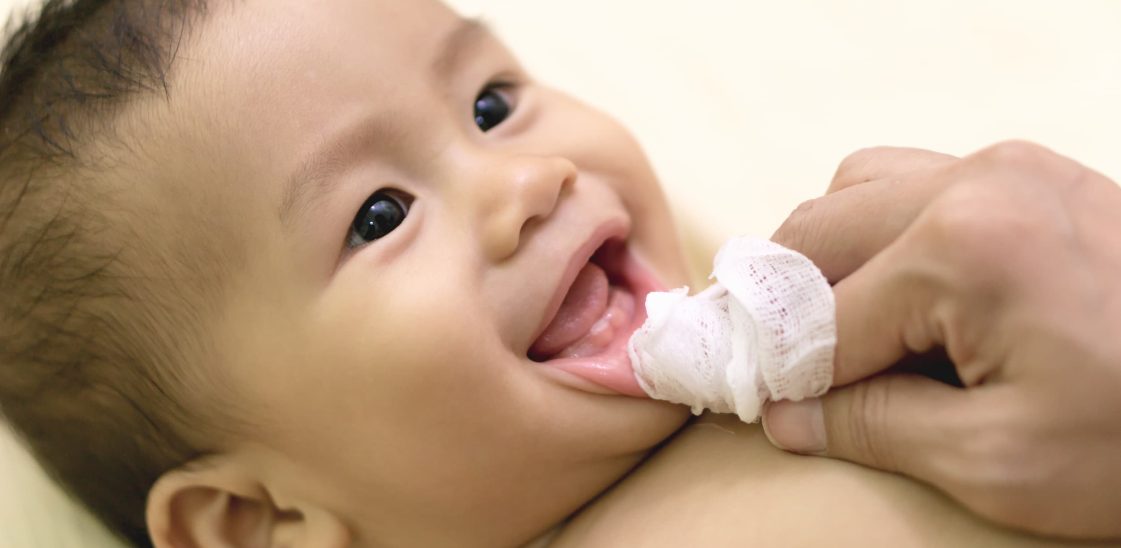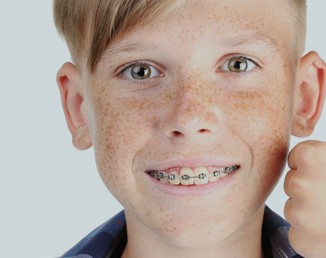
Should I be cleaning my newborn’s tongue?
If you’re a new parent, congratulations on your bundle of joy! You probably already know that there’s a lot to think about where a newborn is concerned, from feeding and bathing to naps and changes. But it’s also important to think about your little one’s oral hygiene from day one – that’s right, even before they’ve developed teeth of their own.[1]
When to start cleaning a baby’s tongue
When your baby is born, they won’t have any teeth, so you don’t need to worry about brushing their teeth just yet. However, if traces of milk or other foods (as they get older) are left on the gums, this can encourage the production of bacteria within the mouth that can lead to infections. Because of this, it’s a good idea to get started with a simple oral hygiene routine as early as you can.
Older children and adults know to clean their teeth at least twice a day, which we usually do when we get up and before we go to bed. Those are convenient times because we don’t tend to eat once we’ve gone to bed – unless you’re partial to a midnight snack. But babies don’t have set routines like that, so it can be difficult for parents to describe any particular feed as the last meal of the day.
Fortunately, it’s not important at this stage to get the timing exactly right. Cleaning your baby’s mouth once a day before bedtime can be a good idea, as this will get them used to oral hygiene at that time of day. You can also clean their mouth in the morning if you wish, but know that getting it done at least once is the main priority to keep your little one’s mouth healthy and clean.
As well as helping to keep your baby’s mouth clean in the present, getting into an oral hygiene routine early can help your child to keep up that habit as they get older. Once their baby teeth start coming in, you’ll need to introduce them to brushing their teeth to keep them clean, which can be easier to do if they’re already used to having their mouth cleaned.[1]
How to clean a baby’s tongue
Cleaning your baby’s mouth and tongue might seem a little odd if you’ve never done it before, but it’s not complicated. While older children and adults can use products like the Orabrush tongue cleaner which is modelled on dentists’ equipment to allow for the deepest clean, you’ll probably find it difficult to use these with your baby. Since babies’ mouths are much smaller, it’s best to stick to smaller tools such as your index finger to clean their tongue and gums.
Here’s what you need to do to clean your little one’s mouth:
- Assembly the necessary items: a piece of gauze, cotton or a clean cloth, and a glass of tap water. Avoid water that is very hot or very cold, as this may alarm your baby or hurt their sensitive mouth.
- Wash your hands thoroughly to ensure they are clean.
- Wrap the gauze, cotton or cloth around your index finger and dip it into the water to dampen it.
- Using the damp cloth, gently wipe your little one’s upper, then lower gums, and then their tongue.
- Discard or wash the cloth used. Don’t use the same cloth twice without cleaning in between, as this can introduce bacteria to your baby’s mouth.
The process is simple, but that’s not to say it will always go quite as smoothly as you’d like. Be patient with your baby – remember, this is a new experience for them, too! As you get into the routine of it, your baby will too, so you should find that the process gets easier as your little one grows.[1]
If you notice anything unusual within your baby’s mouth, such as reddened gums or white patches for example, try not to panic. If you’re still being looked after by a midwife or nurse, let them know as soon as possible and they will let you know what’s causing it and whether you should be concerned. If you no longer have the support of a dedicated midwife or nurse, then take your baby to see a dentist so you can get an expert opinion.[2] It could mean that your little one is teething![3]
Resources:
[1] https://www.toothclub.gov.hk/en/pnc/en_pnc_2_1_1_2.html
[2] https://www.dbth.nhs.uk/wp-content/uploads/2023/05/WPR49390-Mouthcare.pdf
[3] https://www.nhs.uk/conditions/baby/babys-development/teething/baby-teething-symptoms/




